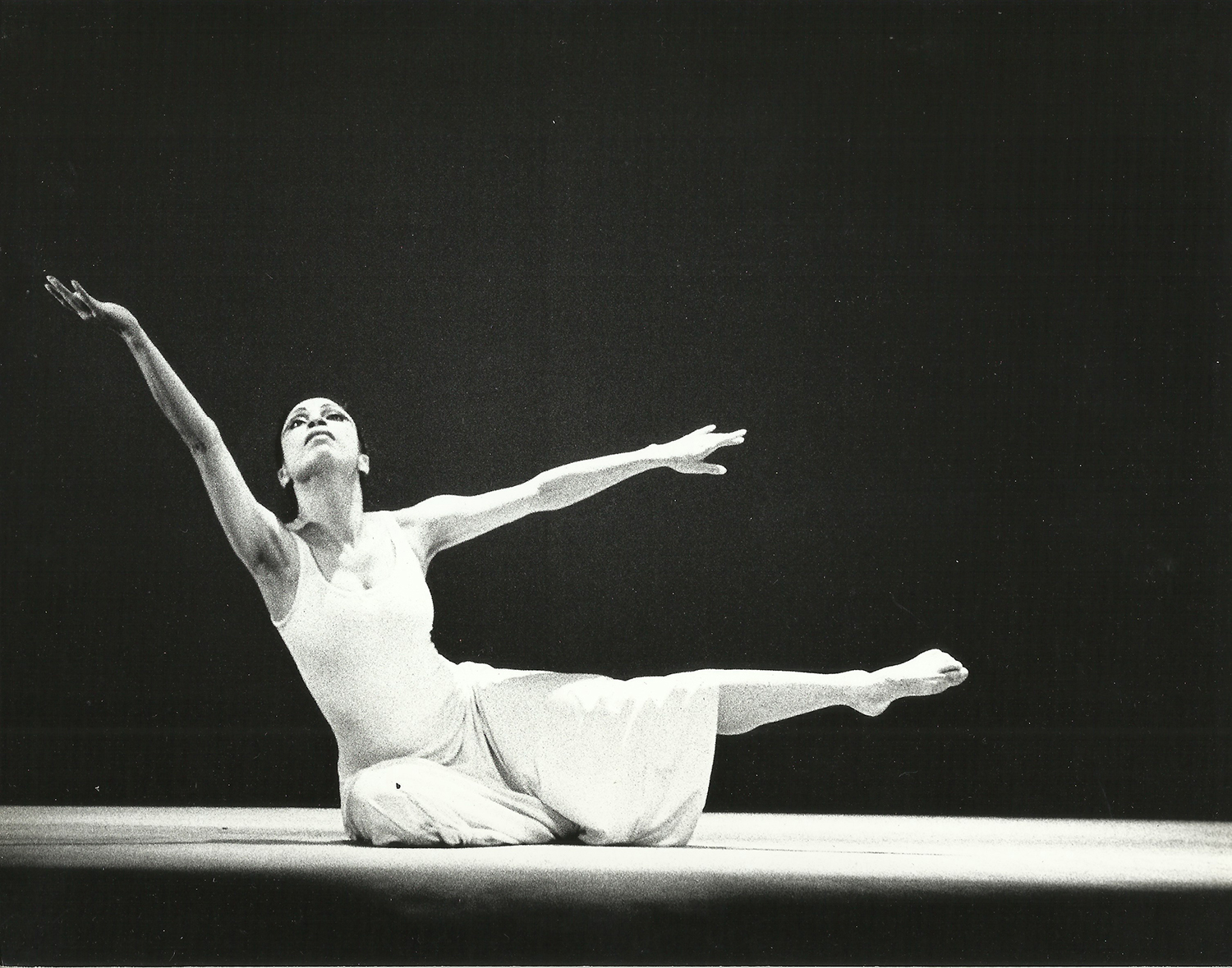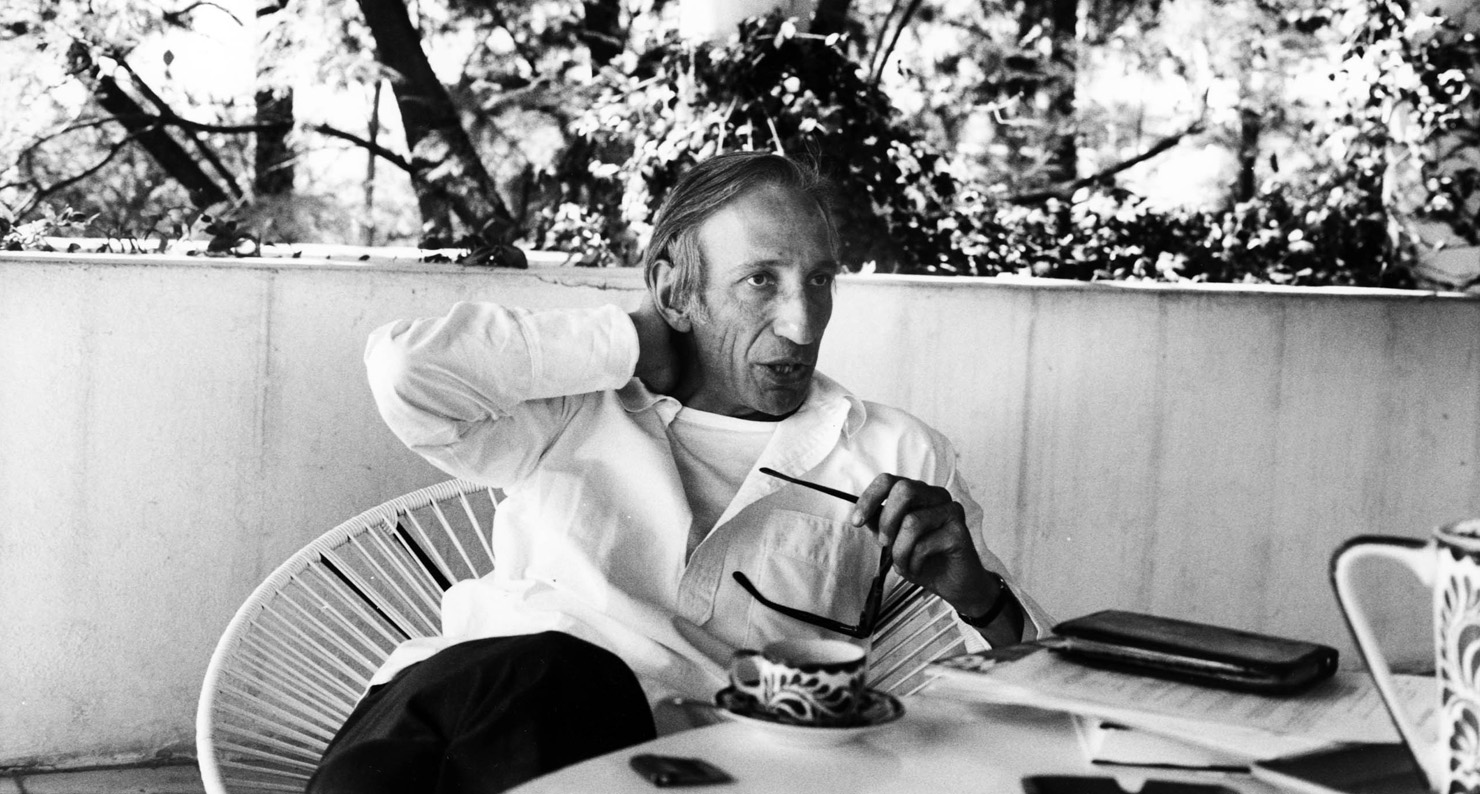Affective Ties
11/23/2023
by Mónica Amor
To Irene Small1
This text draws from Monica Amor’s book Gego: Weaving the Space In Between, New Haven: Yale University Press, 2023.
«…Minds and lives are not closed-in entities that can be enumerated and added up; they are open-ended processes whose most outstanding characteristic is that they carry on. And in carrying on, they wrap around one another, like the many strands of a rope… But the rope is always weaving, always in process and—like social life itself—never finished […] there must always be loose ends.»
There is no doubt that Gego’s work ensued from affective alliances and an ethos of collaboration that is as important as her training in architecture and engineering.3 It is well known that her domestic environment, located since the early 1970s in the Loma Verde building designed by architect Jimmy Alcock–which she occupied with her partner the designer Gerd Leufert—was regularly visited by students and colleagues. But even before (and after) the arrival of non-residents in the afternoons, Gego and Leufert’s exchanges and dialogues with their neighbors, the critic Lourdes Blanco and the Museo de Bellas Artes’ (MBA) director Miguel Arroyo, infused their routines. It was Lourdes, who notably wrote the first text on the Reticulárea (1969) on the occasion of its inaugural installation at the MBA, who later reminded us that the two artists had moved from a house in Las Mercedes to the Penthouse B of the Loma Verde building drawn by the idea of converting an ample terrace into workshop and study. From this building, perched on a hill, and their apartment’s terrace, Gego and Leufert had full access to views that traversed the East-West corridor of the city.4 Also on the terrace, resting and dining areas were a hub for friendly and collegial activity–reanimations that echoed visits from artists and friends to the little house that Gego and Leufert occupied when they lived in Tarma back in the fifties. In 1958, their friendship with artist Alejandro Otero would also lead to an invitation to teach sculpture at the school of fine arts–this would be the beginning of Gego’s three decade long teaching journey. Just the year before she had begun to create constructivist sculptures based on geometric shapes made by bands of metal that were cinematically registered by artist Carlos Cruz Diez in a short film titled Metal Alive (1959). The film’s kinetic exploration was recorded in the spaces of the newly found school of architecture where Gego will also teach.

Many other encounters were occurring across the new urban and institutional spaces emerging across Caracas at the time. For example, at the Centro Profesional del Este–which was a hub for architects, designers, and artists housed in a building designed between 1951 and 1952 by architects Jorge Romero Gutiérrez, Pedro Neuberger, and Dirk Bornhorst. The complex aimed to group a variety of professionals from the industries of planning and construction whose work relied on collaboration. The Centro was organized around environments for work, leisure, and services, including an exhibition gallery, a bar, a restaurant, a gym, a pool and more. These fostered the use of common areas where professionals could socialize and gain further understanding of the collective process of nation building. It was here that Gego participated, along with other abstract artists, in an exhibition organized to honor Soto that mostly included his friends.5 It was also at the Centro, at an event organized by the magazine Integral, that Arroyo met Gego and Leufert. A close relationship, both collegial and affective, followed and led, in 1960, to Arroyo’s request to Leufert to lead the department of design and the collection of drawings and prints of the Museo Bellas Artes de Caracas.
For Gego, the sixties were a decade rich in experimentation and the arts flourished under the aegis of rich dialogues founded on a concerted effort to make culture. Parallel to the constructivist sculptures that required the outsourced labor of a welder, she began to explore assembling by developing strategies of binding that offered release from the preplanned geometric model.
These techniques and the use of thin rods of aluminum metal in small scale works that she titled Lines (1969), informed the making of nets of metal based on a triangular module that were produced during the first months of 1969 and which Gego titled reticuláreas. The reticuláreas involved the linking and knotting of metal rods bought at a hardware store or a fisher supply store across the street from her studio. The end of each rod needed to be twisted into a loop to facilitate the hooking of one to the other and the expansion of the triangular modules that generated the net. And though there was little mediation between hand and material there were lots of tools and work to be done. Especially after Arroyo suggested to Gego to create an environment when using the small room she had been assigned at the MBA instead of thinking of each net as an individual piece. How much this affected the parameters of production of the piece is recorded in the nine-by-eight-inch oblong booklet designed by Leufert that accompanied the 1969 exhibition.5 There, the credit page acknowledged Arroyo as a collaborator while a list of (first) names identifies the seven “helpers” (ayudantes) who were needed to “weave” the work. No doubt, the Reticulárea, as the work was finally titled by Gego with input from the critic Roberto Guevara, provided the artist with important lessons on teamwork akin to the collective activity of craft making and workshop organization with which she was acquainted and that Arroyo, a skillful ceramist himself, forcefully advocated in the fifties. Indeed, workshop-organization shaped Gego’s work.7 This can be traced back to her architecture and engineering training, but it was also an outgrowth of the logic of the furniture enterprise she established in the forties as she negotiated her diasporic situation in a city where so much needed to be done. With Muebles Gunz, Gego oversaw a workforce of about ten people who engaged in the structured and repetitive labor of making modular elements to be assembled.
It was this tempo of rhythmic bodily craftsmanship which she borrowed for the making of her nets and was echoed in the reiterative gestures of netting, knotting and weaving characteristic of artisanal settings. This was labor that undercut the myth of a sharp divide between fine art and craft, artist and artisan, habit and creation, uniqueness and repetition.
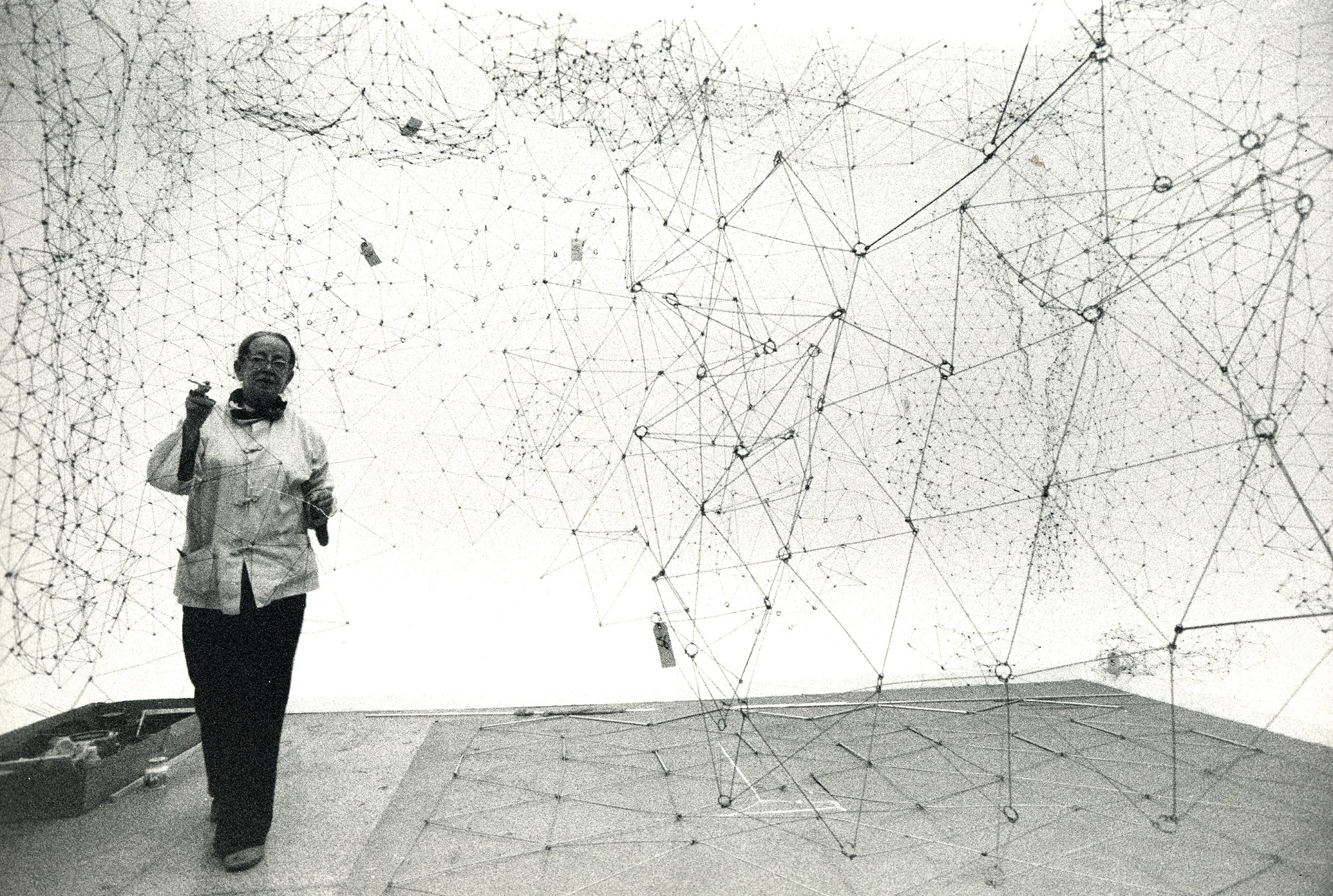
There were other ways in which these boundaries were blurred. Between 1960 and 1967, Gego was involved with the Basic Composition Course at the school of architecture of the Universidad Central de Venezuela. The course introduced students to the fundamentals of spatial representation with the goals of stimulating creativity and visual sensibility, training visual and tactile perception, and familiarizing students with the plastic vocabulary common to form giving disciplines such as architecture, visual arts, and design. Concepts of space, volume, form, surface, structure, texture, line, color, plane, mass and so on were the building blocks of this language. In 1964 Gego, a founding member, joined the Instituto de Diseño Fundación Neumann (IDD), where, until 1970, she taught introductory courses that more or less replicated her teaching at the school of architecture. Here, she also led a seminar in spatial relations between 1971 and 1976 that involved a close rapport with her students. Leonel Vera and George Dunia recall that she sat down with them in the classroom to work on complex geometric models, and that the relationship between instructor and student was one of common exploration and discoveries.8 The institute and its people, was indeed a fulcrum of experimentation and rigor that permeated the life and work that occurred at Loma Verde. There, Gego’s workshop did not resemble an artist’s studio but a tightly organized “taller”–a workroom filled with tools and materials to assemble and fix things, to create and undo models, to preserve and reuse. In fact, the study of volumes and geometry and their organization in space was to be learned analogically (Gego’s word). The abstract forms of geometry were to be constructed with one’s hands and manipulated in the process of model making. Through handling materials and shapes, collectively and experientially, and by rigorously documenting these activities in two and three dimensions, the relations between shapes could be better apprehended. Several works by Gego from the seventies, for example Three Icosidodecahedra and Seven Icosidodecahedra, both from 1977, seem translations of the geometric models considered in the pedagogical setting of the IDD. During these years, Lourdes Blanco observes, on the two principal walls of the living area of Penthouse B, two rails were installed to hang and temporarily exhibit works by Gego and Leufert, to be shown and discussed with friends and colleagues. The works of those friends, say Nedo or Eugenio Espinoza, would also be hung. “As such,” writes Lourdes, “the living area became a small gallery accessible to friends and students.”9 The domestic workshop was the epicenter of Gego’s life and work. Students close to Gego, including George Dunia, Leonel Vera, Álvaro Sotillo, Sigfredo Chacón, and Ruth Auerbach, have noted the fluid transitions that occurred between classroom and home workshop. Along with Leufert, work-related discussions continued and flowed in different directions, help was provided if needed, openings were attended, exhibitions were visited together, publications and logos were designed, food, drinks, and “cafecitos” were had. Both Sotillo and Chacón recall a continuous roster of friends that flowed in and out and shared aesthetic, professional, and deep affection for each other: Ibrahim Nebreda, Roberto Obregón, Oscar Vásquez, Waleska Belisario, Glenn Sujo, Valerie Brathwaite, Miguel Miguel.
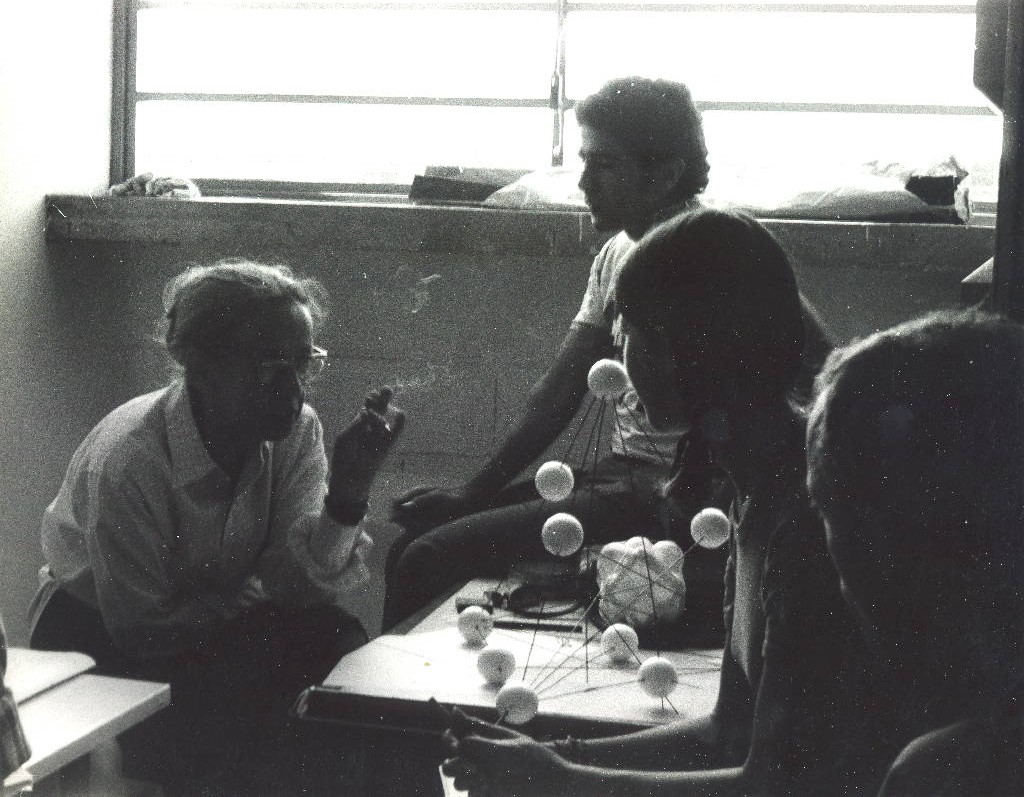

The IDD and its people paralleled other collective, collaborative and affective formations that characterized Venezuelan culture since the fifties. For example, the Cruz del Sur initiative, a bookstore (1944) and magazine founded in 1952 by Violeta Roffé and Alfredo Roffé which later included a gallery. The enterprise, a hub for artists and intellectuals, was a model of collaboration that flourished as an alternative to the authoritative and monumental lineaments of the dictatorial regime. It was Violeta Roffé who, between 1950-1953, with the help of Miguel Arroyo and educator Sara Mendoza, undertook a cooperative in the rural town of Tejerías. With a group of university students, peasants, workers, artists, and educators, they set up housing, a school, and workshops to explore the possibility of advancing a radical and alternative community. This experience would be resumed by students of the IDD in Tarma through an ambitious agenda that called for popular and youth action and was named Arte y Vida. The latter, also modeled as a cooperative in which members of the IDD would engage in shared learning with the native population of Tarma, aimed to advance models of creative self-determination and self-sustenance in favor of rational consumption and against waste and capitalist alienation. This was to be achieved by a rediscovery of sensorial life at the micro-political level of the everyday. Creativity predicated on conviviality between nature and culture, the handmade, the residual, native techniques and materials, was advanced through workshops, educational meetings, field trips and social gatherings. Design was reformulated as a form of social agency based on reuse, preservation, and adapted solutions–a situated hermeneutics that enabled “new organizational models, of conviviality, of production and consumption.”10 Gego was only a member of the advisory board of the Arte y Vida Foundation but students at the IDD saw her relationship to the town as key to their decision to operate there. In Tarma, where from 1953 to 1956 she lived with Leufert, Gego immersed herself in a phase of discovery regarding the natural environment of her adopted country while giving free rein to her artistic inclinations with explorations in the mediums of drawing, printmaking and watercolor. Tarma was also the place where, after a decade of adjustments and learning following her jarring displacement from Germany, she was offered the possibility of a renegotiation of the self. But Tarma, the site of artistic inception (and not origins) was also a fundamental component of an aesthetic ecology that, as Arte y Vida highlighted, marshaled heterogeneity, connectivity, contingency and other forms of knowledge: local, ephemeral, collaborative, artisanal, contextual, and residual. No doubt Gego’s last body of work: the Bichitos, late Dibujos sin Papel and the Tejeduras, parse this residual economy of repurposing.
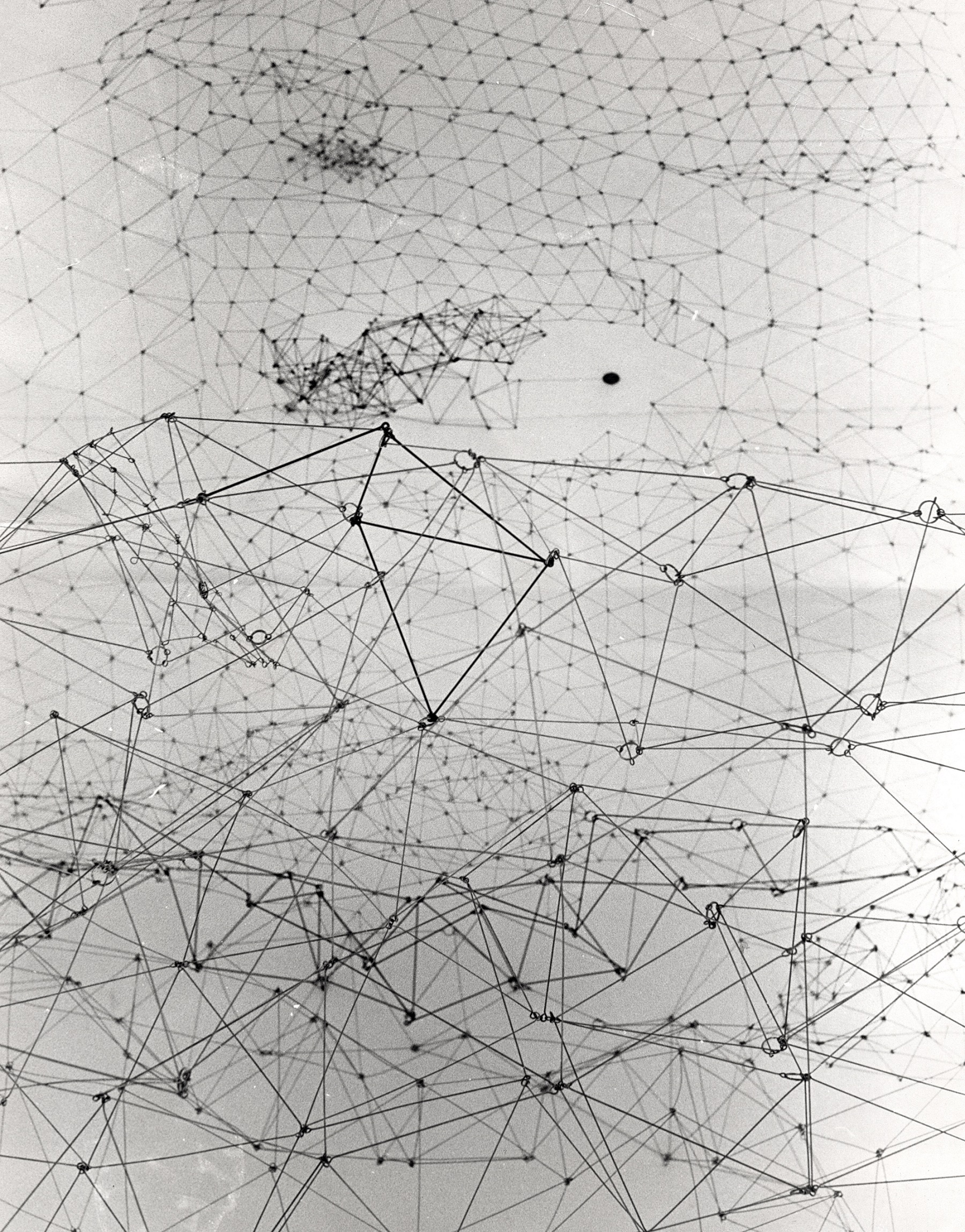



It was in that workshop setting, filled with tools, materials, residues, and objects—all organized to fit the systematic and tentative groping of Gego’s hands—that materials, techniques, and forms used to make a work or a model, or to design an exhibition prop, were constantly redeployed to generate another pathway with what was already there. By “what was already there,” I do not mean only the rods of metal that had been customary in her work and that she imported into the Dibujos sin Papel. I mean also the myriad residual elements that had been used to create the binding techniques of her nets, the countless boxes and cups with spirals, little tubes, knots, bolts, chains, and strings, and the useless, readymade objects that she began to incorporate in her drawings without paper—such as the old Plexiglas almanac in Dibujo sin Papel, no. 10, 1979, or the broken metal mat in Dibujo sin Papel, No. 5-A, 1983. This bricoleur élan that made of recycling a reservoir of possibilities percolated Gego’s life and work, and was foundational to the ingenious binding solutions of her late Dibujos sin Papel, her Bichitos, and of course her Tejeduras. The more conscious displacement from the support of the page to real space that occurred in the drawings without paper unleashed forms of inscription that increasingly drew from the immediate vernacular and everyday space of the artist. Thus, Gego’s reuse of leftover materials from previous works—but also, as Mariana Figarella observed in 1984, materials from the realms of craft and industry (metal nets, grommets, plexiglass, leader sleeves, metal threads, braided wire) and residual elements such as the springs from ball-point pens, pieces of ball chain, lighter-flint fire stones—allowed her to turn the line into a bicho,11 to materially hybridize its iterative possibilities and expand its operative capacity to de-designate.12 The workshop at Penthouse B was the fulcrum of these material and affective assemblages. It was a place of problems and solutions, but also of “tools for conviviality” to repurpose the title of Austrian writer Ivan Illich’s 1973 book. Deeply impactful on the Arte y Vida agenda, Illich stated: “I chose the term ‘conviviality’ to designate the opposite of industrial productivity. I intend it to mean autonomous and creative intercourse among persons, and the intercourse of persons with their environment; and this in contrast with the conditioned response of persons to the demands made upon them by others, and by a man-made environment. I consider conviviality to be individual freedom realized in personal interdependence and, as such, an intrinsic ethical value.”13
